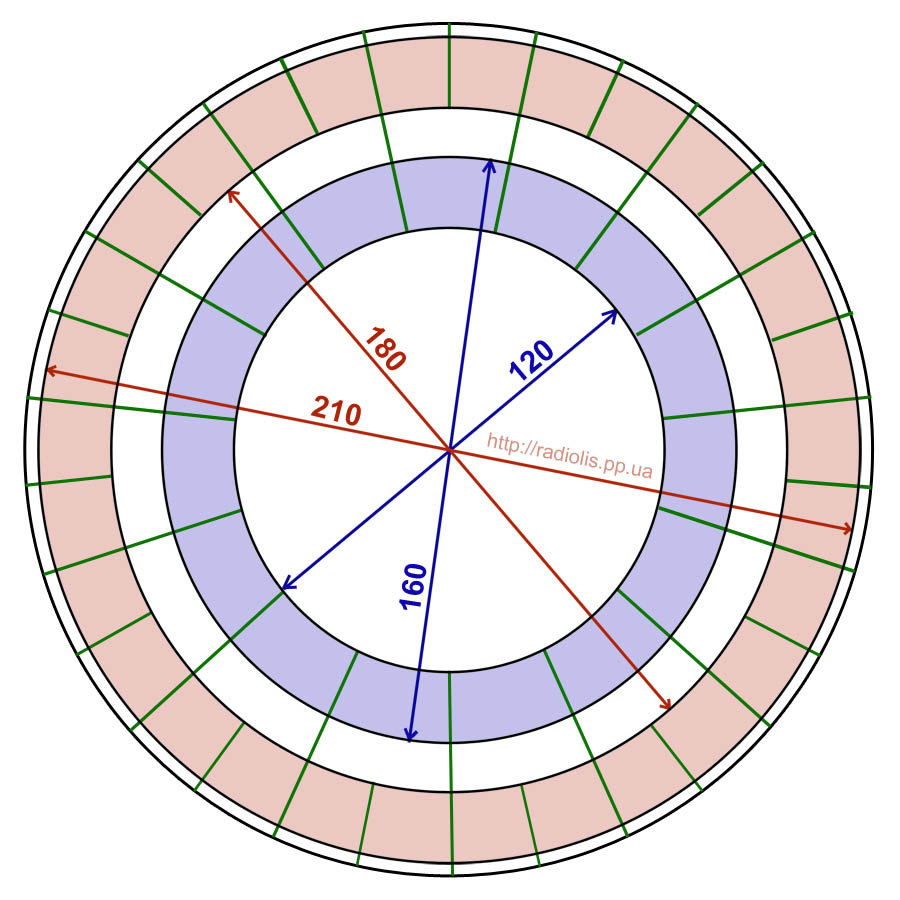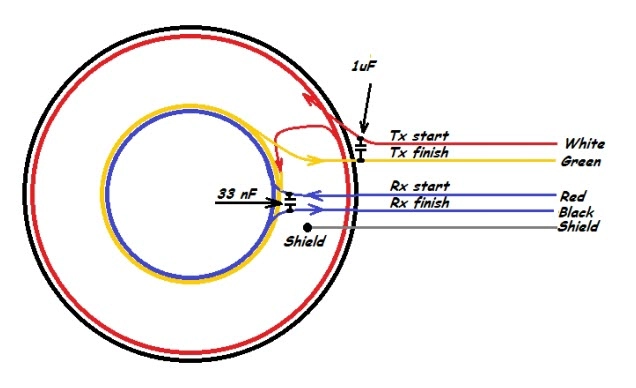
The great advantage of this metal detector is the ease of manufacture of the sensor. In the simplest case, it consists of 27 turns of wire with a diameter of 0.6-0.8 mm wound in a pile on a mandrel with a diameter of 21 cm.
For this MD is very well suitable coil “basket” from KASHCHEY Ø22cm.
Very accurately localize the target allows the katuha- “sniper”: diameter 18.5 cm, 23 turns wire 0.5 mm.
To find out the number of turns for coils of different diameters, you can use the table below: Looking ahead, I will say right away that I coped with the task. In the end, I got this sensor:

There are ready-made forms for coils, in which sensors can be placed with a diameter of 19 or 26 cm. At the same time, two coils cannot be placed in one form, so wind one that is 26 cm. This is approximately 21-23 turns of wire 0.7 … 0.8 mm. Total resistance should be between 0.7 and 2 ohms.

For a deep search, you can build a frame with sides of 70x70cm or even a meter per meter (16 turns of wire will suffice). But based on experience, I can say that with such a sensor, in principle, you will not win anything. Melknot (relative), it also clings, but to drag him well is VERY inconvenient. Only for work on an open field will be suitable, and then it will be necessary to raise it above the ground by 70 centimetres – and from such distances miss a lot of interesting things. Although for those who are going to catch the tanks, will go.

Who wants more, make the sensor Ø30-35 cm, 20 turns. With such a coil, having gained a bit of experience, it will be possible to look for a trifle, and a large one, by changing the distance sensor-ground. And about the deep frame forget it crap.
Elliptical katuha for an impulsnik, it is no more. Fuss in the manufacture of a lot, but the expansion of the area of capture targets is not so great (5-7 cm). But if you already have a suitable frame – then ok.
By the way, a good frame for winding can be made, for example, from a coil from an automatic welding machine. Cut off all unnecessary, remove the partitions and you get a very durable case with a diameter of 24.5 cm.

Who wants to experiment, can wind the coil “planarku” (like a chance). The chuika turns out to be terrible: the manhole is 170 cm. But the truth does not react weakly to the earth, it is necessary to chop the chuika. So the result will ultimately not be much different from a ring-shaped sensor.

For the sake of curiosity, I tried such a coil, as in the figure above – works great. Frame thickness ~ 4 mm. It is easier to wind it than a truly planar one:

A basket-type coil will also work ( http://www.metdet.ru/Sensor_K1.htm ):

With it, the chuik is slightly higher (a couple of centimetres), but it also causes more interference.
It is possible and such a coil, as in the photo below, but, believe me, this “beard” is not worth such an effort. The ring is worn much easier, and the figures are almost the same.

n short, there are many suitable sensor manufacturing options, but there is nothing simpler than an ordinary ring. And the difference in the depth of detection is either insignificant, or levelled by false positives from the ground.
There is also an interesting option – the usual “double ring” (or dual-coil). Two coils are wound – 15 turns on a mandrel somewhere 12 cm and 12 turns on a mandrel somewhere 23 cm. One is located inside the other, connected in series and connected to the device. The idea is that a small coil will cling to shallow targets, and a big one will be coarse at a good depth.



